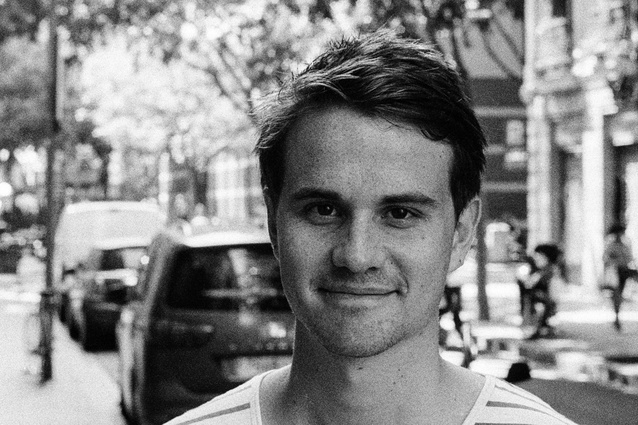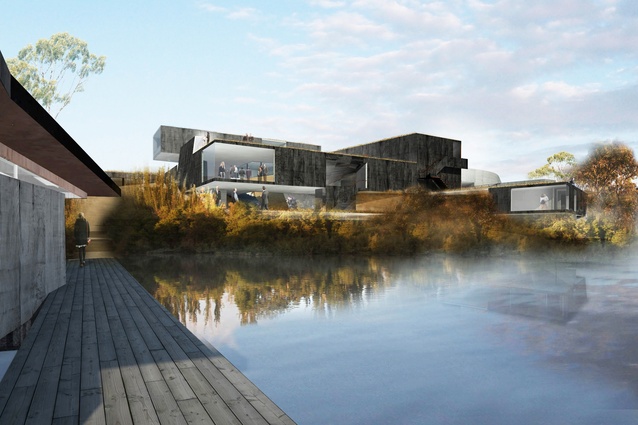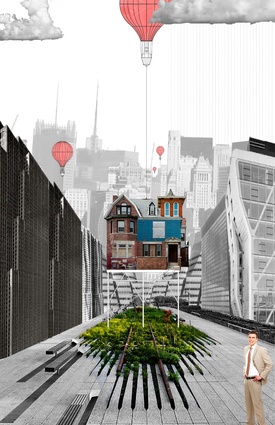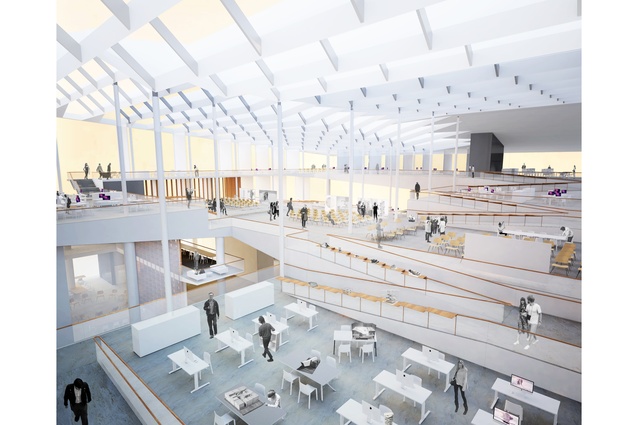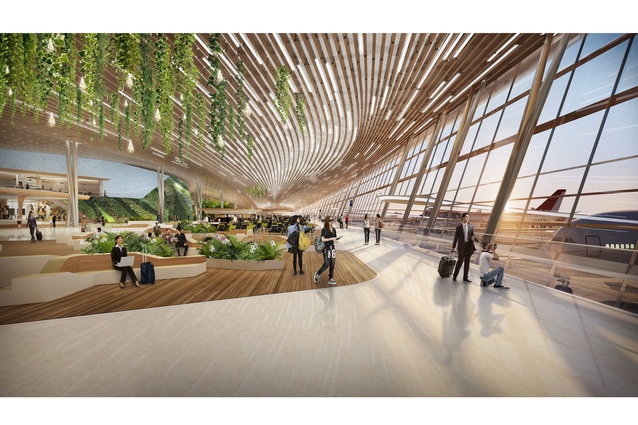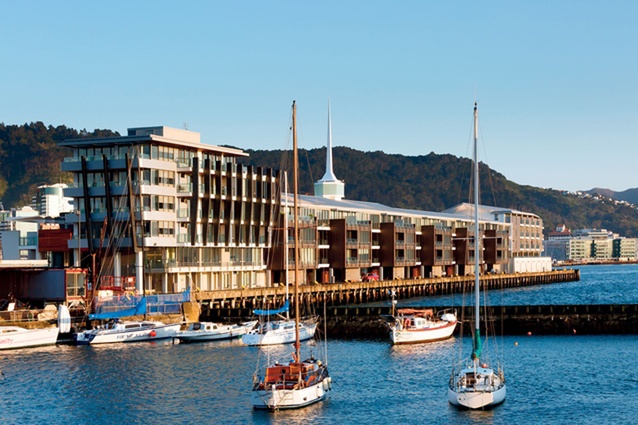Architect interview: Nick Roberts
Nick Roberts is an architect for UNStudio based in Amsterdam. After gaining his Masters of Architecture and then tutoring at Victoria University, Nick worked for Athfield Architects in Wellington. In parallel to his design work at UNStudio, he has also had a recent role as a design workshop leader at the Royal Danish Academy of Fine Arts.
Amelia Melbourne-Hayward recently caught up with Nick to find out more about the life of a young Kiwi architect working in Europe.
Amelia Melbourne-Hayward: What led you to the Netherlands and to working for UNStudio?
Nick Roberts: I was interested in the way some notable Dutch architects have been able to scale their experimental approach to a global audience. It suggests that buildings with unusual or even provocative qualities don’t need to be one-off objects, but can have a more widespread relevance. I felt that UNStudio sits within this culture while sometimes producing buildings that can be quite distinct from their counterparts.
AMH: What do you see as the key differences between working as an architect in Amsterdam and as one in Wellington?
NR: After graduating, I worked for three years in New Zealand. This period was directed toward developing very specific knowledge about things like building codes, resource consents and local materials. Since moving to Amsterdam, none of the projects I’ve worked on have been local. This can create a feeling of perpetually starting again, figuring things out from scratch – but this distance can also be leveraged to produce more unexpected solutions and responses to local conditions.

AMH: How does coming from New Zealand inform your work overseas?
NR: I’m not sure if this is a country specific approach or not, but I’ve been inspired by New Zealand architects who are able to balance their intuitive design approach with a more nuanced, and even critical, reading of the context. Simon Twose and Ath [Ian Athfield] are precedents in this regard, and it’s something I try to carry into whatever project I work on now.
AMH: What is the most exciting or interesting project you’ve been a part of to date?
NR: The Lodge on the Lake – a competition to design a new residence for the Prime Minister of Australia, that I worked on and won in collaboration with two good friends – Henry Stephens and Jack Davies. We did the project after hours and across three countries, which was an exciting process. It was an interesting project in that it allowed us to address several contradicting factors that are increasingly present in and demanded of contemporary architecture. We used the ground plane to negotiate, exaggerate or blend differences between things like ceremony and security, public assembly and domesticity, occupation of ground and commodification of the view.
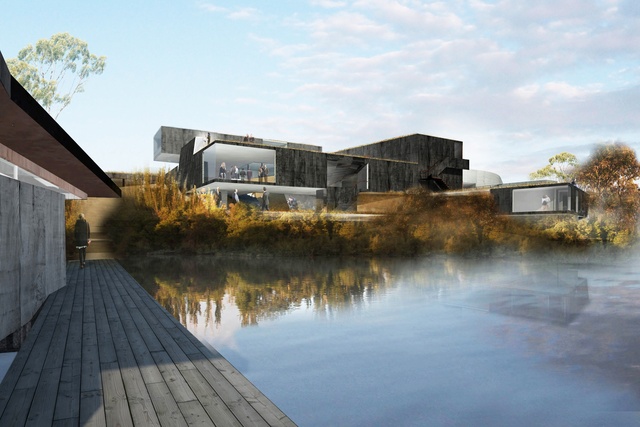
AMH: What are some of the aspects you enjoy most about working in Amsterdam? And the least?
NR: The ex-pat culture has its up and down sides. On one hand, working in such an international community puts you in contact with a lot of people in the same situation as you – while on the other, this can give the place a temporary feeling when visas run out, or contracts end. Your social circle can be both immediate and precarious.
AMH: What advice would you give to young architects thinking of leaving New Zealand to work in an overseas practice?
NR: I think we are in a moment where ideas, techniques, and images are disseminated, reproduced and reconstituted at an incredible rate. It can create an unnecessary urgency about keeping up with whatever the latest thing is, while producing portfolios that look increasingly similar. In this context – if you have anything about your formative education or experience that is unique, I would really value this when stepping into the next phase of your career.
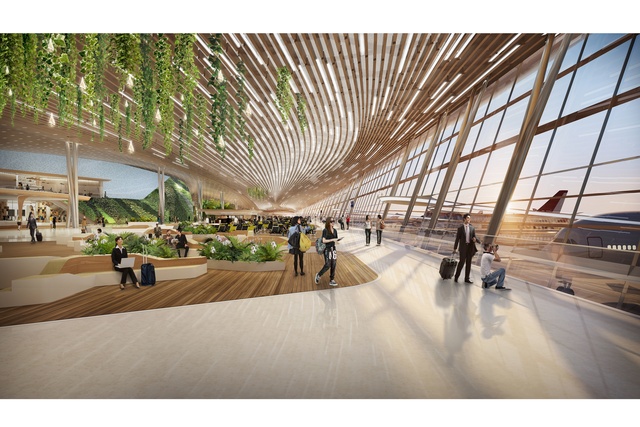
AMH: What are a few points you’ve learned so far from your time with UNStudio?
NR: That it is viable to have space to have broad interests and research agendas within practice, without having to capitulate to making that research immediately applicable to a design project. I’ve been fortunate to meet people here who are interested in getting a better grip on broader cultural, technological and economic issues that sit outside the typical remit of architecture practice.
Perhaps more unique to UNStudio’s best work is the idea that diagrams can be generative – propagating all manner of outcomes. This differs from where you might commonly see the diagram used to reductively explain and represent a fixed idea. It’s about imagining possibilities rather than prescribing solutions.
AMH: If you could build a house anywhere in New Zealand, where would it be and why?
NR: I would love to be able to do something in Awaroa. I think building somewhere that is at once iconic and fragile would be a great responsibility. The place also has a varied history of land ownership and treatment of the landscape, and so it would be great to contribute positively to that.
AMH: Finally, where is your favourite place to travel in Europe for architectural inspiration?
NR: Berlin – for many reasons: its public space is diverse in both form and in the ways it is inhabited, which contributes to an amazing sense of freedom and adventure. It’s a good lesson for understanding when architecture should be in the fore, or background. Within this context, the great buildings spread across the city still contribute to – and define the city in really meaningful ways.
For Nick Robert’s opinion piece on self-aware cities, see here.

